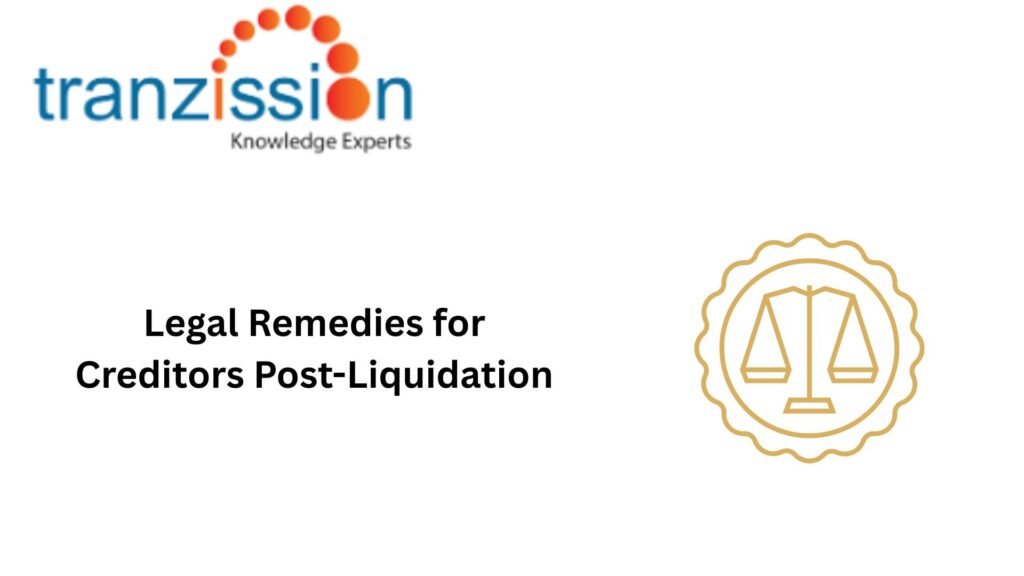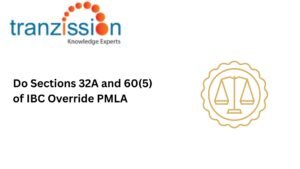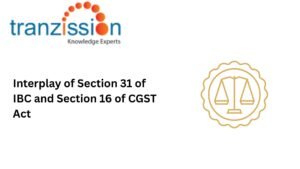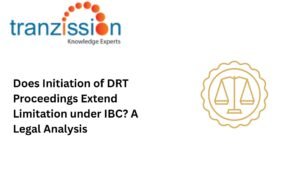
Legal Remedies for Creditors Post-Liquidation

Table of Contents
After Creditors Post-Liquidation generally have limited legal avenues for pursuing further remedies, but some exceptions and potential actions exist depending on the nature of the claim and the specifics of the liquidation process. This article looks into what rights or claims the creditors can make post-liquidation, and other options that may be available.
Understanding the Liquidation Process
Section 33 of the Insolvency and Bankruptcy Code, 2016 (IBC), the Creditors Post-Liquidation process commences when the National Company Law Tribunal (NCLT) passes an order on the basis of certain reasons, such as:
- Does not receive a resolution plan before the expiry of the insolvency resolution process,
- The resolution plan is rejected for non-compliance with the requirements specified therein.
To oversee the Creditors Post-Liquidation process, a liquidator is appointed. Their duties include verifying the claims submitted, taking custody of assets, selling them, and distributing the proceeds to creditors. This includes evaluating the corporate debtor’s assets, preserving them, and potentially continuing the business for the benefit of the liquidation.
Rights of Creditors Post-Liquidation
Submission of Claims:
Creditors Post-Liquidation have the right to submit their claims to the liquidator within a specific time frame, typically 30 days from the commencement of the liquidation process, through Form C, Form D, or Form E, depending on the type of creditor. The liquidator then verifies the claims, and the creditors may dispute any rejected claims.
Order of Priority (Waterfall Mechanism) – Section 53:
Section 53 of the IBC outlines the priority of creditor claims during the liquidation of a company, dictating how proceeds from the sale of assets are distributed. It prioritises specific types of creditors and debts, with secured creditors generally receiving priority over unsecured creditors.
Legal Remedies and Avenues Available Post-Liquidation
For Secured Creditors:
If secured Creditors Post-Liquidation relinquished their security, they are entitled to share in the liquidation estate’s proceeds according to the priority of distribution under section 53 of the IBC. If they realised their security interest, they could claim for the remaining debt under section 53(1)(e), which has a lower priority than those who relinquished their security.
For Unsecured and Operational Creditors:
Their recourse primarily focuses on ensuring they receive their fair share of the proceeds, which are distributed according to a priority order. Operational creditors are ranked above unsecured financial creditors but below secured creditors and workmen’s dues. They also have the right to file a claim with the liquidator and the right to challenge rejection or modification of claims before the NCLT. They can also submit a claim of remaining dues post-distribution via separate civil recovery proceedings, if applicable and legally permissible.
Legal Recourse in Cases of Fraudulent or Preferential Transactions:
In cases of fraudulent or preferential transactions during insolvency proceedings, the legal recourse typically involves challenging these transactions through the NCLT. Creditors can file an application under Sections 43–51 for reversal of undervalued, preferential, or extortionate transactions.
Role of the Adjudicating Authority
An appeal against a liquidator’s decision under section 42 of the IBC can be filed by a creditor to the Adjudicating Authority within 14 days of receiving the liquidator’s decision. The appeal challenges the liquidator’s decision to either accept or reject a claim. Under section 60, a party aggrieved by an order of the NCLAT can appeal to the Supreme Court on a question of law arising out of that order. This appeal must be filed within 45 days of receiving the NCLAT’s order. The Supreme Court may allow a further 15 days for filing the appeal if the party demonstrates a sufficient cause for the delay.
Other Civil and Contractual Remedies
There are civil and contractual remedies that are not found under the IBC, such as:
- The enforcement of personal and corporate guarantees by creditors and parallel proceedings against guarantors permitted post-liquidation.
- Creditors may pursue arbitration or civil suits against third parties for recovery of independent contractual claims.
Best Practices and Recommendations for Creditors Post-Liquidation
Creditors need to be aware of their rights if the NCLT decides on liquidation. Along with insolvency professionals, creditors should ensure early filing with correct documentation and evidence. Creditors need to engage with the liquidator to ensure clarity of claims. Further, they should seek expert counsel for disputes over claim rejection and monitor fraudulent transactions, and ensure appropriate orders.
Conclusion
Liquidation suspends ongoing legal proceedings against a company, it does not necessarily extinguish all legal remedies available to creditors. Even during liquidation, creditors may have recourse to certain actions, particularly if they hold secured claims or if the liquidation process is not going smoothly. For example, if a company is foundto have acted fraudulently leading to insolvency, creditors may have grounds for further legal action. Therefore, timely action, strategic decisions, and legal recourse are key to optimizing recovery.
Read more :





